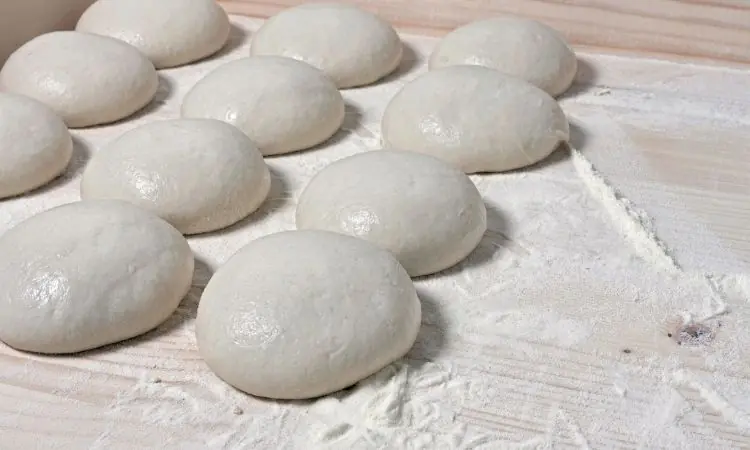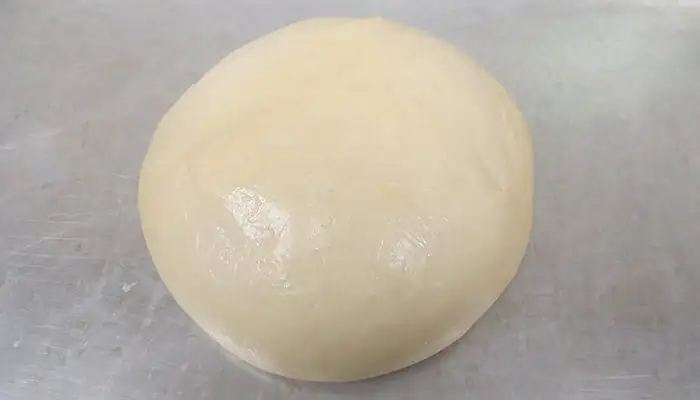Pizza dough can last up to 5 days in the fridge. It should be stored in a tight-seal container or plastic wrap.
Understanding the shelf life of pizza dough is essential for anyone who loves homemade pizza. Proper refrigeration is key to maintaining the Dough’s freshness and preventing spoilage. The quality of pizza dough in your fridge will directly influence the taste and texture of your final product.
It’s vital to note the Dough’s condition; a grey hue and sour smell indicate it’s time to toss it. To enjoy the best homemade pizza, keeping track of how long your Dough has been chilling is important. Remember, Dough often yields the best flavor within a couple of days.
Shelf Life Of Pizza Dough In The Fridge
Pizza dough’s shelf life in the fridge is a hot topic for any home chef or pizza lover. Fresh Dough can turn a good pizza into a great one. But knowing how long it lasts in the fridge is key to planning your delicious pizza nights. Let’s deeply dive into factors influencing pizza dough longevity and understand the difference between homemade and store-bought Dough.
Factors Affecting Dough Longevity
The duration of pizza dough remaining fresh and usable doesn’t depend on a single factor. A mix of ingredients, storage, and preparation methods determines its fridge life.
Commercial Vs. Homemade Shelf Life Differences
Store-bought and homemade pizza dough age differently. This table highlights their shelf life differences.
| Type of Dough | Expected Shelf Life in Fridge |
| Commercial Dough | Up to 2 weeks |
| Homemade Dough | 1 to 5 days |
The preservatives in commercial Dough extend its life. Homemade Dough, with no additives, typically has a shorter fridge life.

Credit: mortadellahead.com
Proper Storage For Extended Freshness
Crafting the perfect pizza starts with the best Dough. Keeping pizza dough fresh is critical, and how one stores it makes all the difference. Proper storage ensures the Dough remains useful and tasty for your next pizza adventure. This section dives into the specifics of storing your pizza dough in the refrigerator to maximize its shelf life.
Ideal Refrigeration Temperature
The refrigerator’s temperature setting is key to preserving your pizza dough. To maintain optimal freshness, set your fridge to a consistent temperature of 40°F (4°C). This temperature slows yeast activity but does not completely halt the fermentation process, which can contribute to the flavor.
Best Containers For Pizza Dough Storage
The right container is crucial for maintaining dough quality. Choose a container that is both airtight and sized appropriately for your Dough to prevent dryness and over-fermentation.
| Container Type | Benefits |
| Airtight Plastic Containers | It keeps moisture in and prevents Dough from drying out |
| Glass Bowls with Lid | Non-reactive, easily see Dough’s condition |
| Reusable Silicone Bags | Eco-friendly, space-efficient |
Label your container with the date. Press a small plastic wrap directly on the Dough’s surface before sealing it to add another layer of protection against air exposure.
Recognizing Spoiled Pizza Dough
Recognizing when pizza dough has spoiled is key to ensuring your next homemade pizza is tasty and safe to eat. Here, we look at how to tell if your Dough is past its prime.
Visual And Olfactory Signs Of Spoilage
Always trust your senses. When in doubt, hiring the side of caution is best.
Health Risks Of Using Bad Dough
Using spoiled pizza dough poses several health risks:
Consuming spoiled food is a serious matter. It is important to discard any dough that shows signs of spoilage.

Credit: natashaskitchen.com
Extending Dough Life Beyond Refrigeration
Extending dough life beyond refrigeration means exploring options to make pizza dough last even longer. When a fridge is not enough, there are effective methods. They help to preserve the freshness and quality of pizza dough for future pizza nights. Understanding these techniques is essential for any home pizza chef.
Freezing Pizza Dough For Long-term Use
Freezing is a fantastic way to extend the life of pizza dough. The process keeps Dough fresh for weeks or even months. Follow these simple steps:
Remember: the quality of ingredients affects dough longevity.
Thawing Techniques For Optimal Quality
Proper thawing is critical for dough quality.
This ensures Dough maintains its texture and leavening properties. Never rush the thawing process with heat. It can ruin your Dough. Use these methods for the best pizza-making experience!
Tips For Fresh Dough Every Time
Fresh pizza dough elevates homemade pizza to a new level. Knowing how to store your Dough is crucial to ensure the best flavor and texture. Use these simple tips to keep your pizza dough fresh every time.
Timing Your Dough Preparation
Making your Dough ahead is a great way to save effort on busy nights. But even when stored in the fridge, the clock starts ticking. Here are bullet-proof strategies:
Incorporating Preservatives Naturally
Longer-lasting Dough without chemicals is possible. Here’s how to naturally extend its life:
Properly storing your pizza dough can make your next homemade pizza night a smooth, delicious success. Follow these steps for the best results from your fridge to your oven.
Reviving Pizza Dough From The Fridge
Storing pizza dough in the fridge is a great way to keep it fresh for later use. But you might find the Dough cold and uncooperative when that later use arrives. Don’t worry! It’s easy to bring your chilled Dough back to life, making it ready for the perfect pizza base. Let’s explore how to revive your pizza dough from the refrigerator.
Steps To Return Dough To Room Temperature
Before shaping your pizza, let the Dough warm up a bit. Here’s what to do:
This gentle thaw maintains the Dough’s texture and yeast activity.
Re-kneading To Restore Texture
Re-kneading chilled Dough brings back elasticity. Follow these steps:
You’ll know it’s ready when it stretches without tearing.

Frequently Asked Questions For How Long Does Pizza Dough Last In The Fridge
Can Refrigerated Pizza Dough Go Bad?
Pizza dough can spoil in the fridge. Typically, it lasts up to 5 days. Signs of bad Dough include an off-smell, discoloration, and a noticeable change in texture. Always check it before use for safety and best results.
What’s The Optimal Fridge Storage Time For Pizza Dough?
For best results, use refrigerated pizza dough within 48 hours. However, it can be kept for up to 5 days. Beyond that, the yeast may lose vitality, leading to less-than-ideal rise and texture.
How Do You Tell If Pizza Dough Is Still Good?
Check your Dough for a sour smell, a gray color, and any visible mold. These are clear indicators that the pizza dough is no longer good. Additionally, if the Dough has an unusual texture, it may have gone poorly.
Does Pizza Dough Freeze Well?
Yes, pizza dough freezes very well. To preserve its quality, tightly wrap it and store it in the freezer for up to 3 months. Thaw in the refrigerator overnight before using to ensure the best texture and flavor.
Conclusion
Storing pizza dough in the fridge ensures freshness for future baking adventures. Its lifespan typically spans 1-2 weeks, depending on factors like ingredients and storage methods. Remember to seal it well and note the preparation date for best results. Happy baking—enjoy that delicious pizza whenever the craving strikes!

As the author of the “Ultimate Pizza Guide: Recipes, Tips & Secrets Revealed,” I’m dedicated to sharing my love for pizza and empowering others to create delicious homemade pizzas with ease. Join me on a journey to uncover the secrets to perfecting your pizza game!



